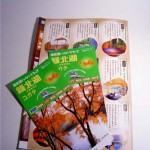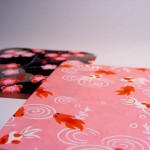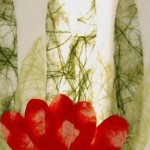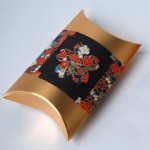Freebies for Art Projects
Today, we produce a lot of waste in our homes and at work from packages, junk mail, as well as products that have served a purpose and are no longer needed.
Many of these used and wasted materials can be used for projects to create practical or decorative items.
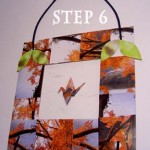
In previous posts, I’ve already shown how to make decorative frames and boxes from materials around your home.
If you ever have a project in mind and require materials like cardboard or decorative paper, unless it’s a specialized project, you can use a lot of the free materials that are available.
There are many things we have around the home that can be quite useful.
For example:
Cardboard:
- dried food packages
- old/used notebooks
- product packaging
Paper:
- flyers
- fast food restaurant
- menus
- brochures
- business cards
- wrapping paper
- maps
- holiday cards
- newspapers/magazines
- mail/money envelopes
String:
- packaging string
- sewing thread
- yarn
- shoelaces
- hair ties
- boxer elastics
- old clothes/socks/bag straps
Extras:
- colourful pens
- paints
- markers
- nail polish
- old/broken jewelry
- anything old or torn
- anything with decorative bits and pieces.
Besides our homes, there are many other places that will have freebies.
With many of my eco projects, I use various materials that I have at home, or happen to receive (usually from people who stand outside handing out flyers).
Other places that I’ve noticed for freebies are:
Supermarkets:
newspapers, magazines, flyers, brochures, boxes, bags, foam, paper
Banks:
Brochures, envelopes, carbon paper (if you make a mistake on a form)
Train/ Bus Stations:
Flyers, brochures, free magazines & newspapers
Cafes:
Brochures, paper food bags, tissues, wooden stir sticks, mini spoons, sugar packets & mini cream containers (after use), plastic straws
Fast Food Restaurants:
Plastic straws, tissues, paper tray covers, sugar packets and mini cream containers (after use), plastic utensils, wooden stir sticks, brochures, flyers,
Museums and Art Galleries:
Lots of reading materials, advertisements, brochures, free magazines, postcard ads, flyers (all will usually have colourful or interesting images)
Book Shops / Music Shops:
Free magazines, catalogues, flyers, ads
Department Stores/Shopping Malls:
Flyers, free samples, brochures, free magazines, newspapers
Washi and Chiyogami for Scrapbooks and Photograph Storage
Throughout the year we celebrate special occasions with our good friends and loved ones.
We watch little ones grow, celebrate birthdays, weddings, fun holidays and capture each memorable moment with a photograph to keep forever.
Some of us may store these photographs in a simple envelope, photo album, scrapbook, or in a traditional box of keepsakes, while others may happily display them around the home or work.As the years go by, those memories become more and more valuable and safe storage is very important, so that the captured memories really can last a lifetime.
One of the best papers to use for storing, decorating, sending or displaying photographs is Japanese Washi and Chiyogami paper.
The traditionally made washi uses purified water and natural plants and fibres which makes it acid free. This not only makes it the best paper to use for storage and protection, but also offers a lovely look and texture to compliment photographs, rather than overtake them.
There are fine and delicate washi that allow light to pass through it. This creates a very lovely look when framing a photograph. All you have to do is cut the paper at least 2 centimetres wider than all the sides of the picture and secure it to the back so that the excess juts out as a frame. Once that is complete, place it on a window or safely in front of a light source, such as a tealight or lamp.
Other types of washi are thicker and have varied textures that can add a bold compliment to images.
To protect all of your pictures, even if they are stacked in a box, simply place one sheet of washi between each photograph, then wrap one long sheet over the entire stack and tie with a string.
Chiyogami is fantastic for decorations since it’s carefully painted with an array of stunning colours and patterns. The colour selection for chiyogami paper is unbelievable and durability can’t be beat. Even though it’s light as a feather, it can be used like fabric, even when wet.
Covering or decorating storage boxes, picture frames, envelopes and using it as scrapbooking paper truly adds a special touch and shows how important the photos are.
If Chiyogami seems like it’s too flashy to use in great amounts, try using it as a touch of colour.
One very simple way is to cut out shapes or silhouettes( animals, flowers, objects etc…) and attaching them to neutral washi paper or directly onto plain picture frames, photo albums , boxes, and even the photos themselves.
One thing to remember is to make sure to use acid free adhesives when attaching the paper directly on the photographs. If you are still worried about adhesives, try simple origami. There are thousands of origami folding techniques that can be done simply to make lovely add-ons for decoration, without using glues or tape to attach them on. Search online for keywords like origami page markers or simple origami decorations, this will give you endless ideas as well as step-by-step instructions.
The page markers are my personal favourite since they are simple and add a sweet touch.


